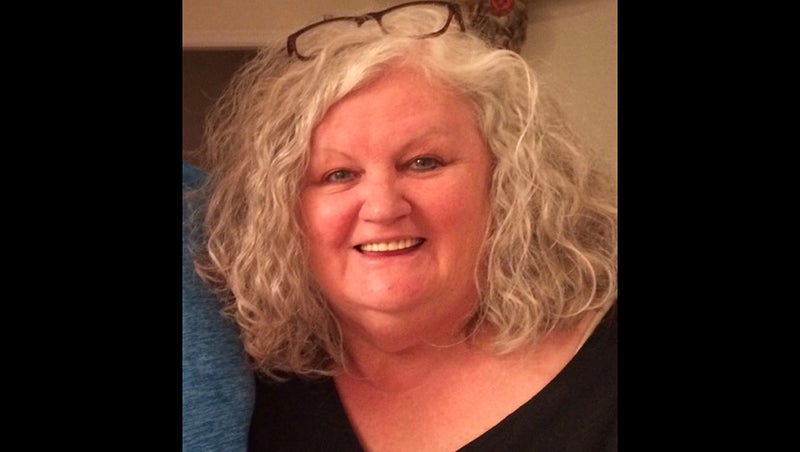The Nature Corner: Coronavirus sequestered – Nature from my back porch
Published 12:03 pm Monday, May 11, 2020
|
Getting your Trinity Audio player ready...
|
America and the world are going through something unprecedented in my lengthy lifetime, not since the Spanish Flu of 1918, I suppose. Since my wife and I are retired, we don’t have to fear for losing our livelihoods, not unless something unlikely and quite dire occurs, such as being drawn into a depression that takes away our retirement savings. But there is, of course, a psychological toll. Besides the stress of worry over the future and the fate of friends, there is the isolation entailed by “social distancing.”
We all will hopefully come out of this stronger and wiser. Among lessons learned might be these that occur to me:
- Our increasing dependence on texting, social media and other “communication” technologies has created a sort of voluntary social distancing of its own. I think we are finally craving more interpersonal contact and better recognizing the forgotten or neglected value of such in our lives. (The recent emergence of Zoom has allowed friends, relatives, church groups, book clubs and such to have at least virtual face-to-face gatherings online.)
- Families seem to be finding more time together and doing more together. Since parks are mostly still open, I notice more attendance there with what appear to be family groups walking, riding bicycles, etc. And I saw only one kid with his face buried in his smart phone. This is probably also to preserve a parent’s sanity with all their children home because schools are closed? My son is sequestered 24/7 with four teenage children. I’m still trying to wrap my mind around that! (Besides the usual health benefits of outdoor exercise, viruses disperse much more readily out of doors rather than in confined spaces.)
- Our restrained situation may foster more time with and appreciation of nature and one of the best ways to do this is bird watching from your porch or kitchen window, with the aid of bird feeders and binocular perhaps. A recent article in the Chicago Tribune by Nara Schoenberg introduced itself in this way: “Backyard birding having a moment thanks to the coronavirus, with homebound Chicagoans spotting everything from great horned owls to fiery cardinals and canary-yellow finches.” The article said the Chicago Audubon Society reports that activity on their Facebook group has grown by 134% and membership by 12% in the past month.
One can provide birds with the basics, food, water and plant cover for perching, concealment and nesting with little trouble and in a limited space. For food, I have three feeders: a seed feeder (sunflower seed is their all-round favorite), suet feeder and a hummingbird feeder. Plant cover, having a variety of trees and shrubs, also provides food by way of berries they produce (e.g., holly, wax myrtle, pyracantha and mulberry) and also the caterpillars and insects they harbor. For water I have a couple of bird baths and a fountain (for my own enjoyment, but the motion of the water is attracting to most birds). Planting flowers will attract hummingbirds.
Plant cover not only is essential but gives you an opportunity to get your hand in the dirt and do some creative gardening and landscaping. Avoid pesticides, herbicides — anything with “cide” in the name — which are harmful to birds – and humans, too! Native plants need less chemical assistance, fertilizers and such, are hardier and generally more attracting to birds.
Most of the birds regularly visiting my yard stay year-round. Robins, mourning doves, Carolina wrens, tufted titmice, Carolina chickadees, eastern towhees, brown thrashers, house finches and a red-bellied woodpecker, I consider my neighbors. Most nest somewhere nearby and will likely return to the feeders with their youngsters later on.
I prefer the old-fashioned term “bird watching” to “birding” partly because watching the behavior of my backyard birds is part of my enjoyment. The robins seem to really go at it in the bird bath. With all their wing flapping and thrashing about, they make it more a shower than a bath. The towhee, although more comfortable scratching around on the ground for its seed with its dance-step-like backward shuffle, is starting to get the knack of hanging on to the seed feeder, at least long enough to knock more seed to the ground.
My favorite visitors at the seed feeder were a colorful rose-breasted grosbeak and goldfinches doing their alchemy of molting from grey to gold with the change of seasons. What a fitting close to winter.
Spending more time here on my porch the last couple of months, which happily coincided with spring weather, I’m taking better notice of what nature is up to. Catkins, drooping clusters of tiny flowers produced by some trees, were being shed and showered on my porch. Of the trees that that produce catkins in the spring that came to mind — oaks, willows, beech, poplar — none were nearby. My neighbor has a river birch, eastern North Carolina’s native birch tree. Mystery solved. I also identified a few plants that had been puzzling me, making new acquaintances in old surroundings, including a Japanese dogwood.
I have other nature-neighbors that visit other than birds. A couple of anoles (sometimes called Carolina chameleons) sun and display on the porch railing. And of course, just for my dogs’ amusement it seems, squirrels are in the yard looking for droppings from the bird feeder.
Watching from my porch, nature seems to go about its business as usual as the spring unfolds like a blossoming bud. There seems to be a lesson here, that regarding our coronavirus crisis, this too will pass.
Author’s note: Thanks to my daughter-in-law Jill Friedman Marshall for giving me the heads up about the article cited above from the Chicago Tribune.
Ernie Marshall taught at East Carolina College for thirty-two years and had a home in Hyde County near Swan Quarter. He has done extensive volunteer work at the Mattamuskeet, Pocosin Lakes and Swan Quarter refuges and was chief script writer for wildlife documentaries by STRS Productions on the coastal U.S. National Wildlife Refuges, mostly located on the Outer Banks. Questions or comments? Contact the author at marshalle1922@gmail.com.
FOR MORE COLUMNS AND LETTERS TO THE EDITOR, CHECK OUT OUR OPINION SECTION HERE.
ALSO OF INTEREST:





